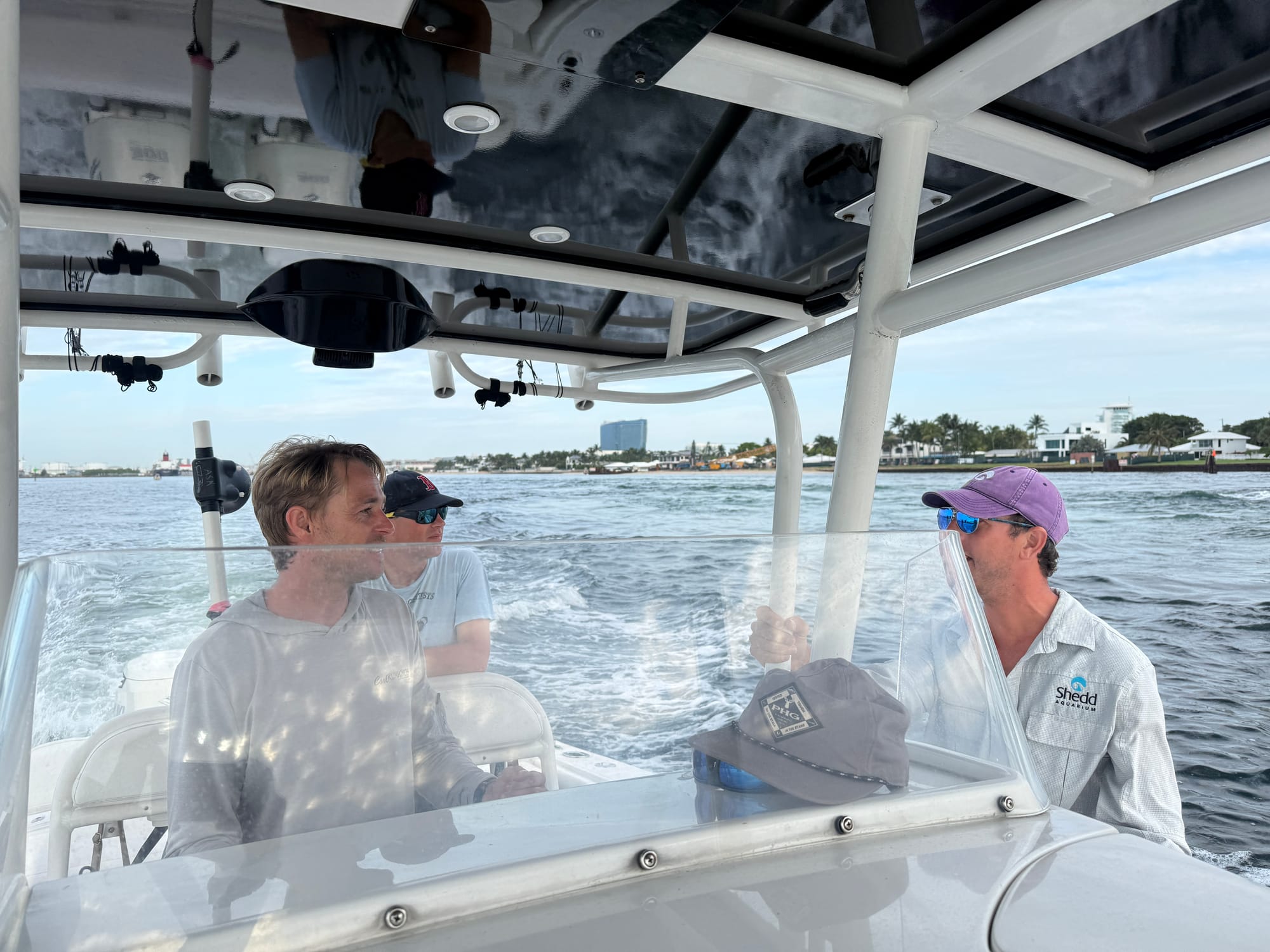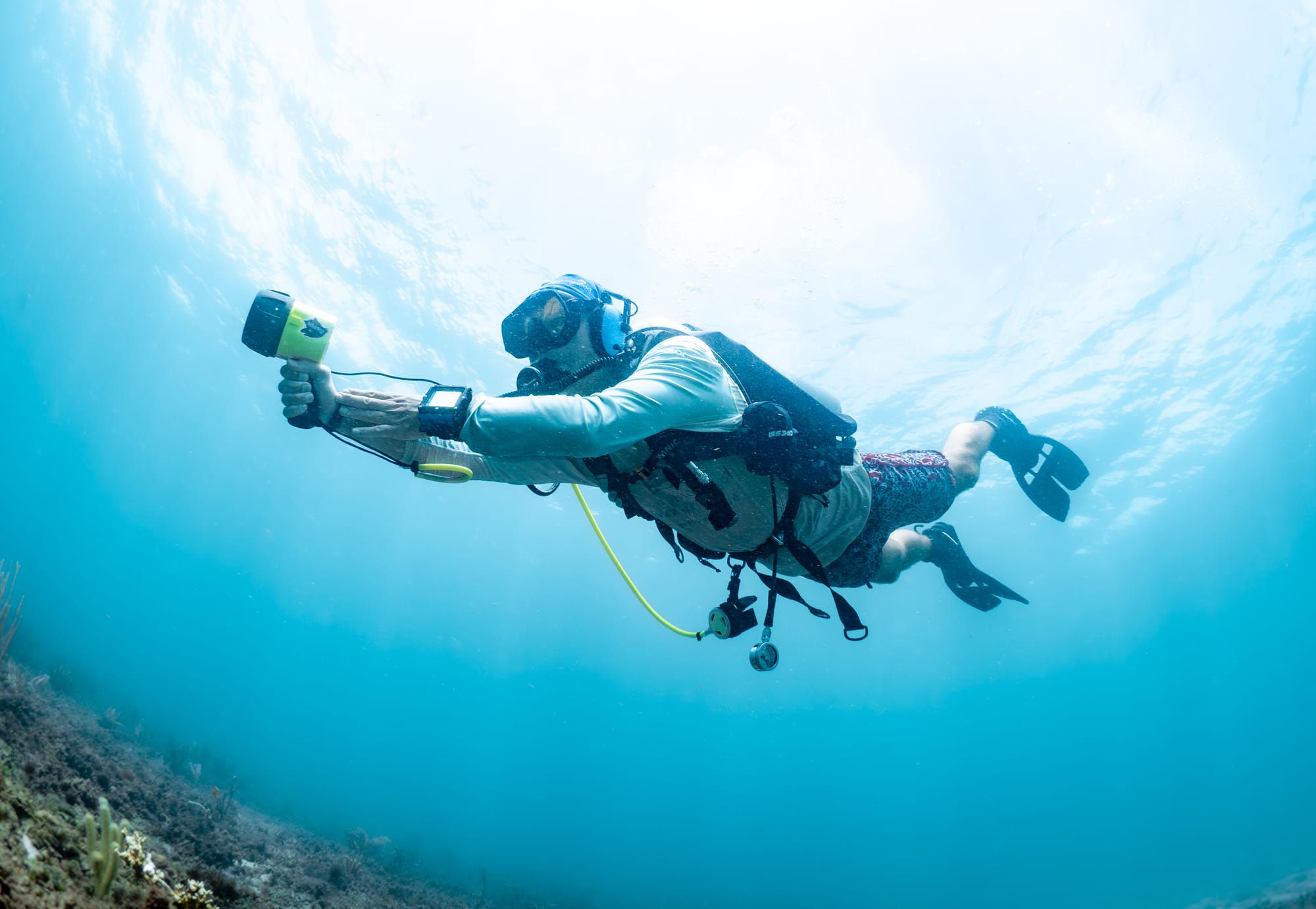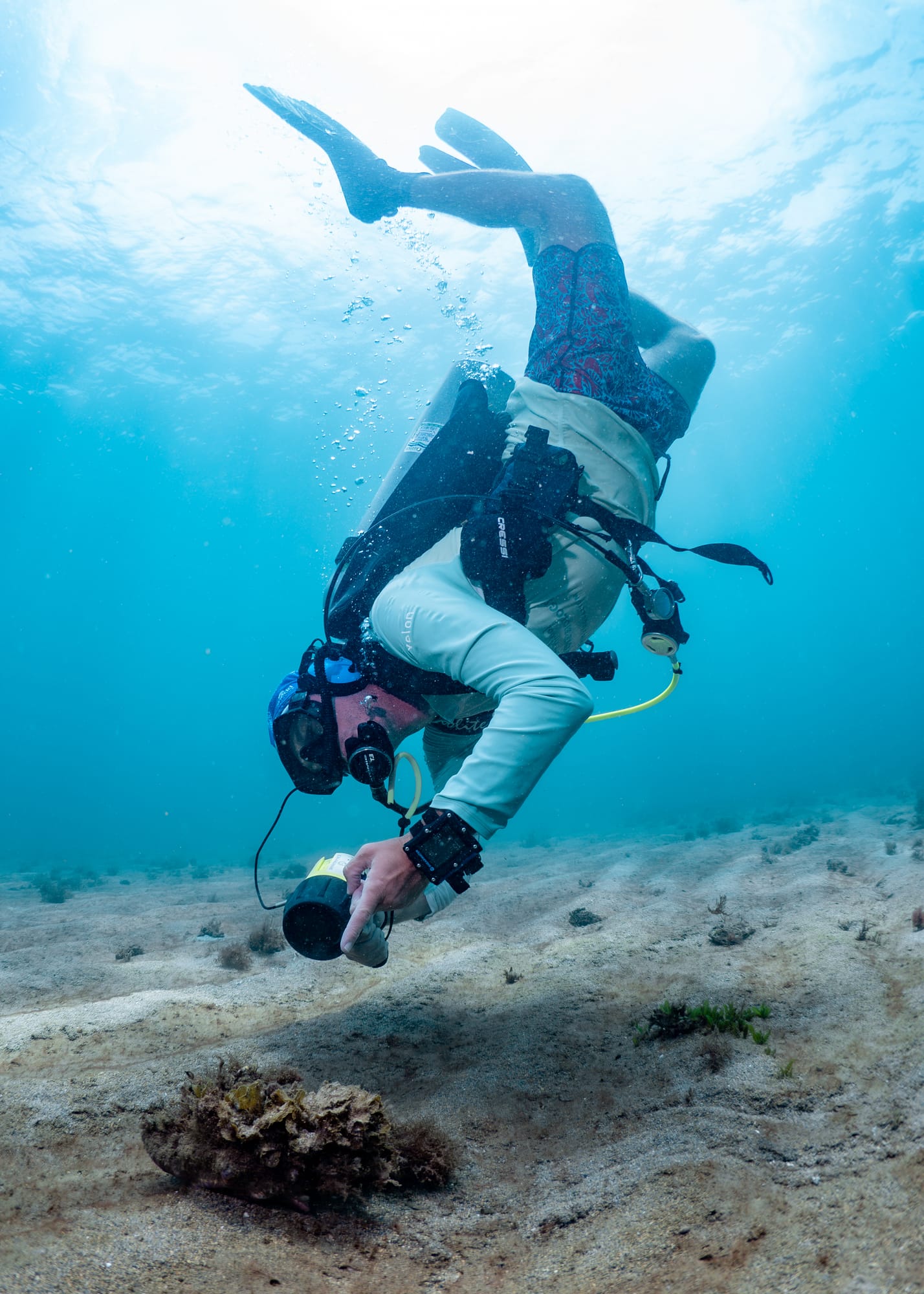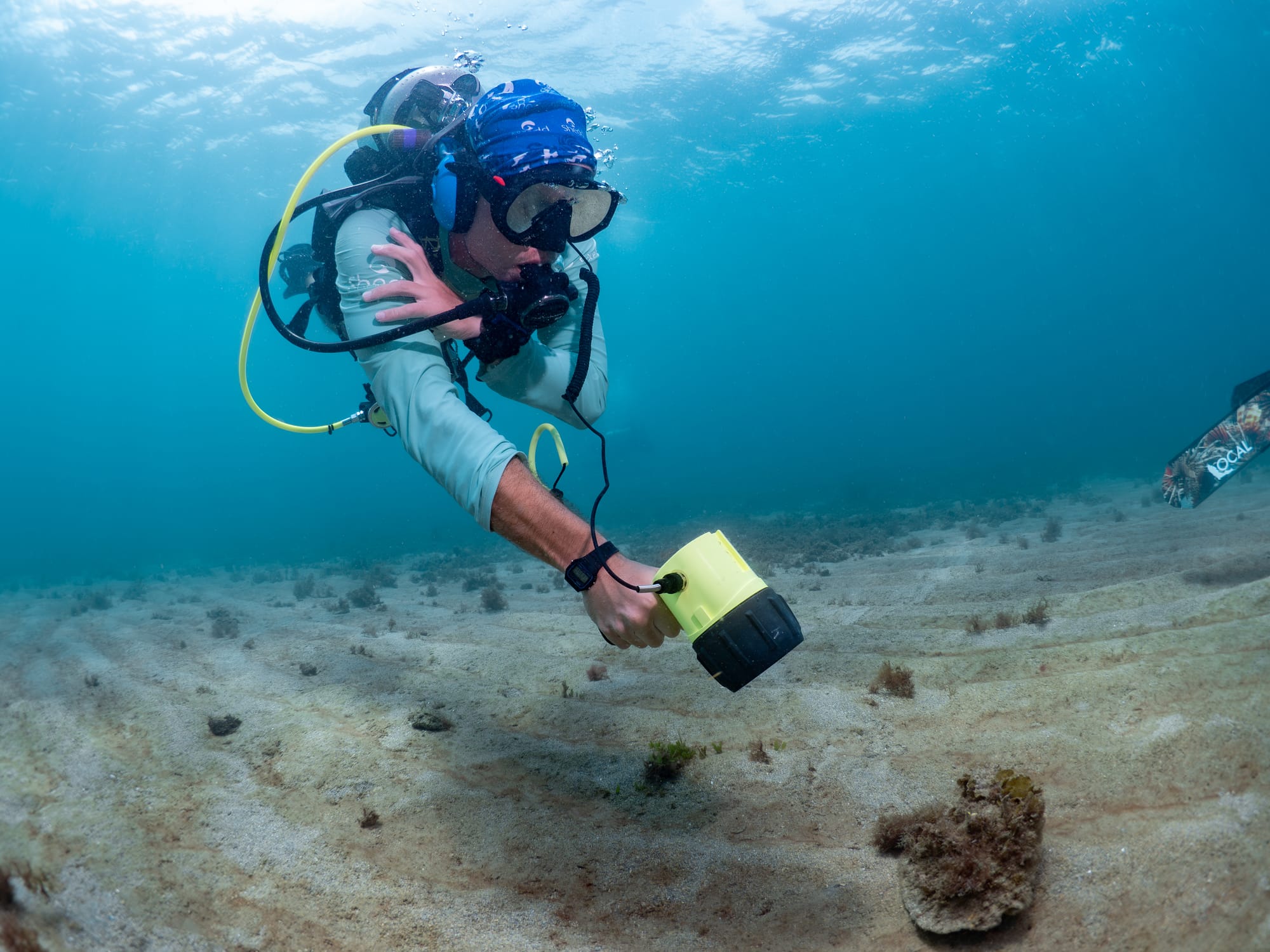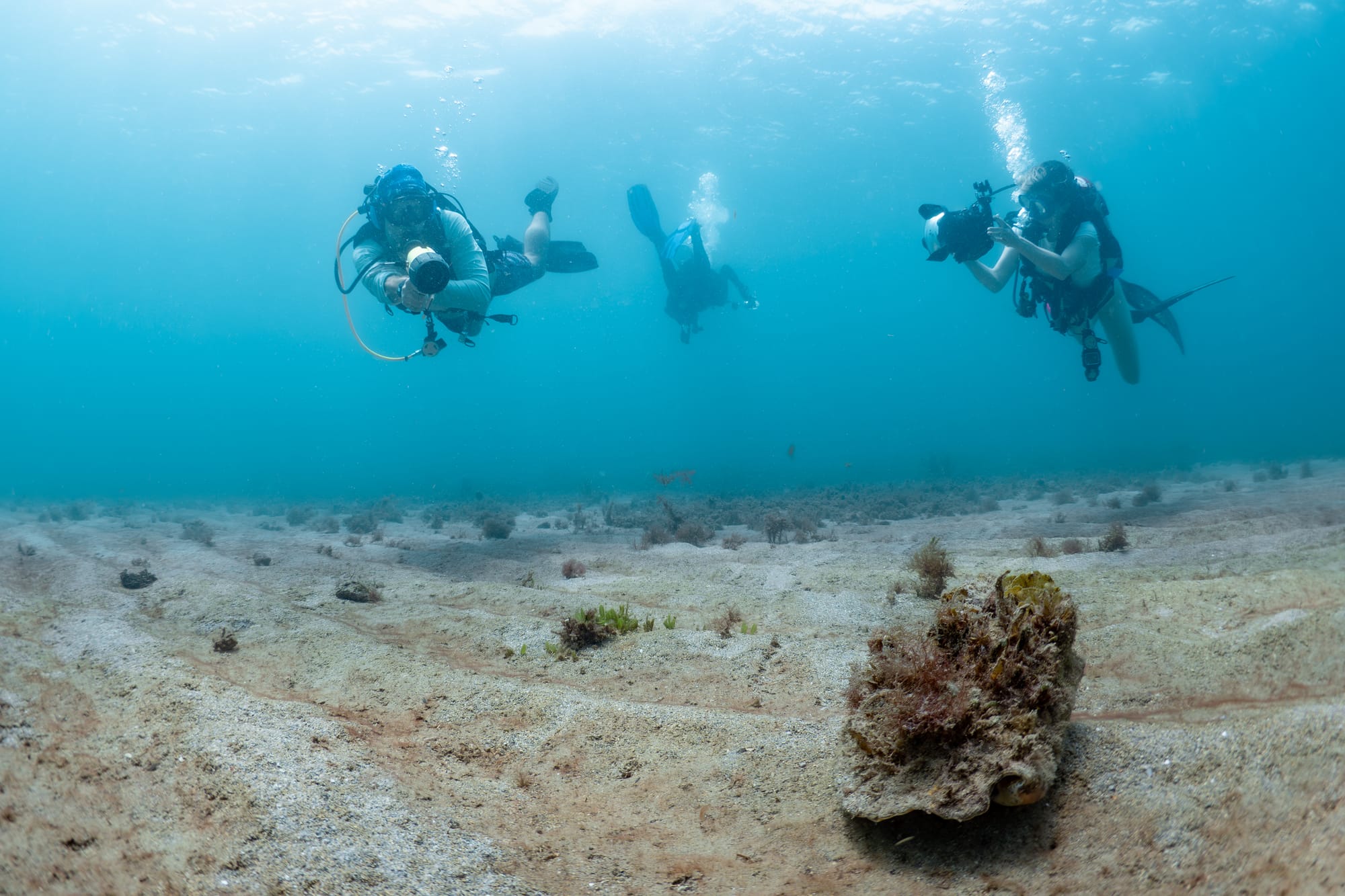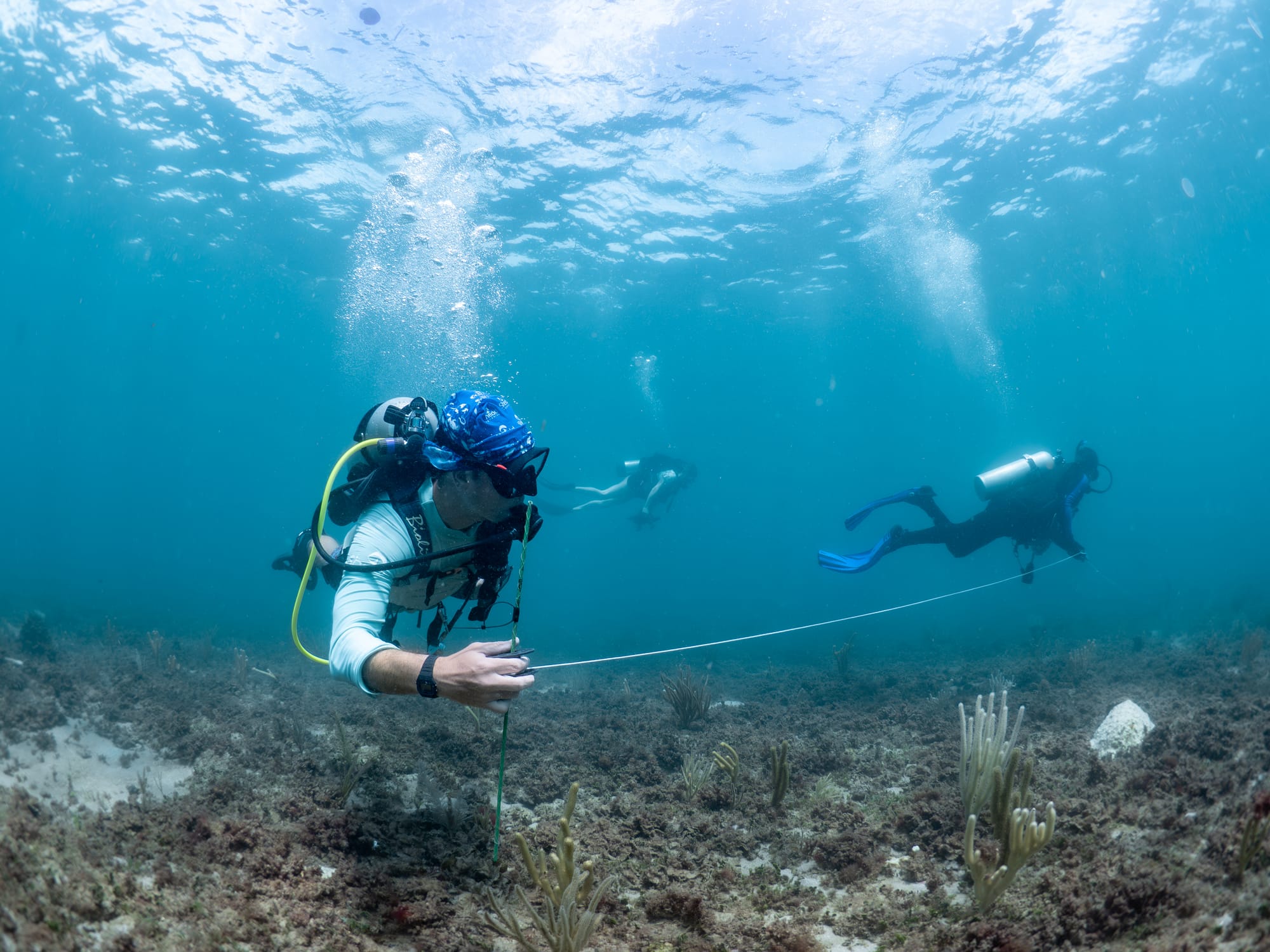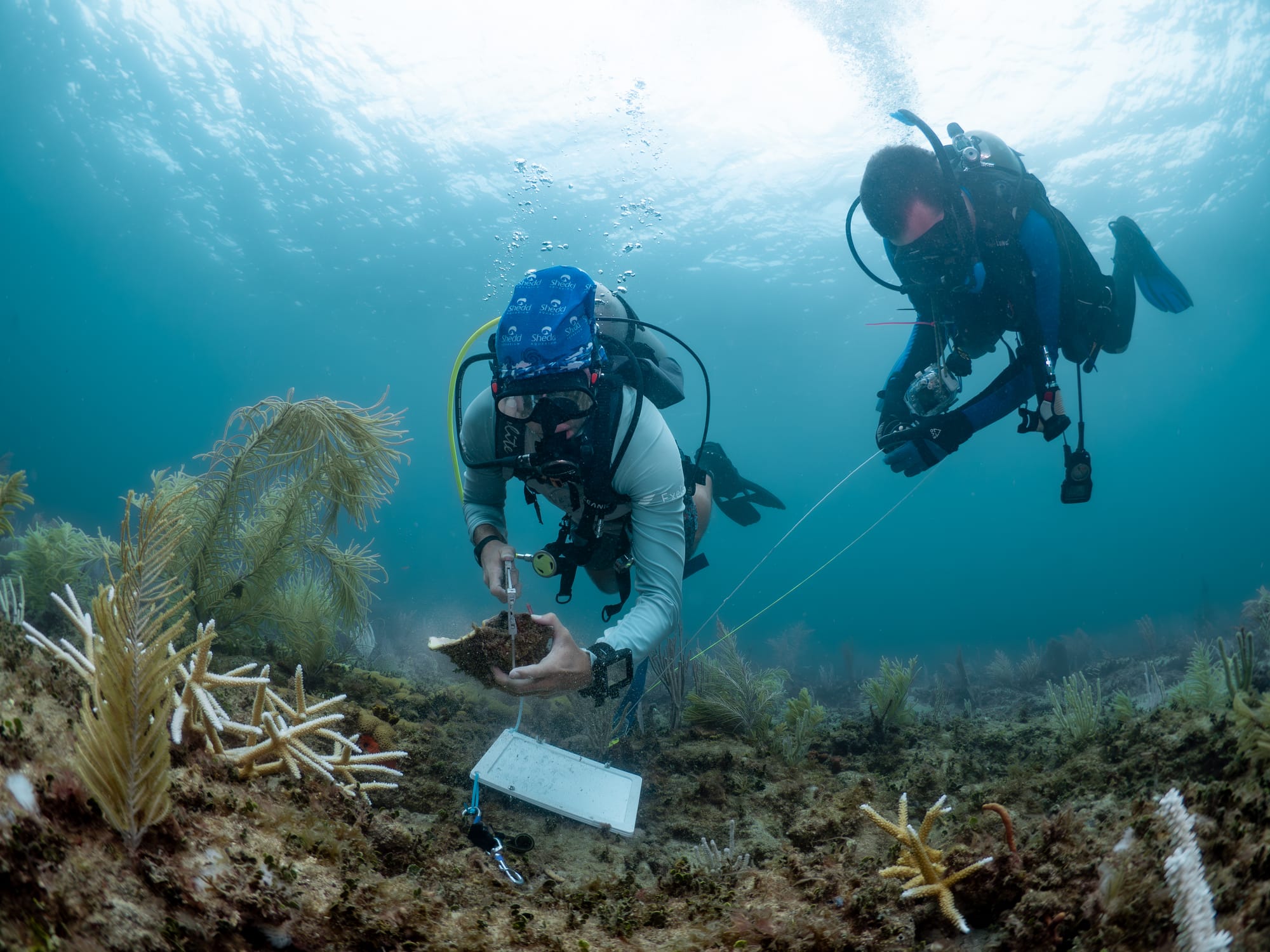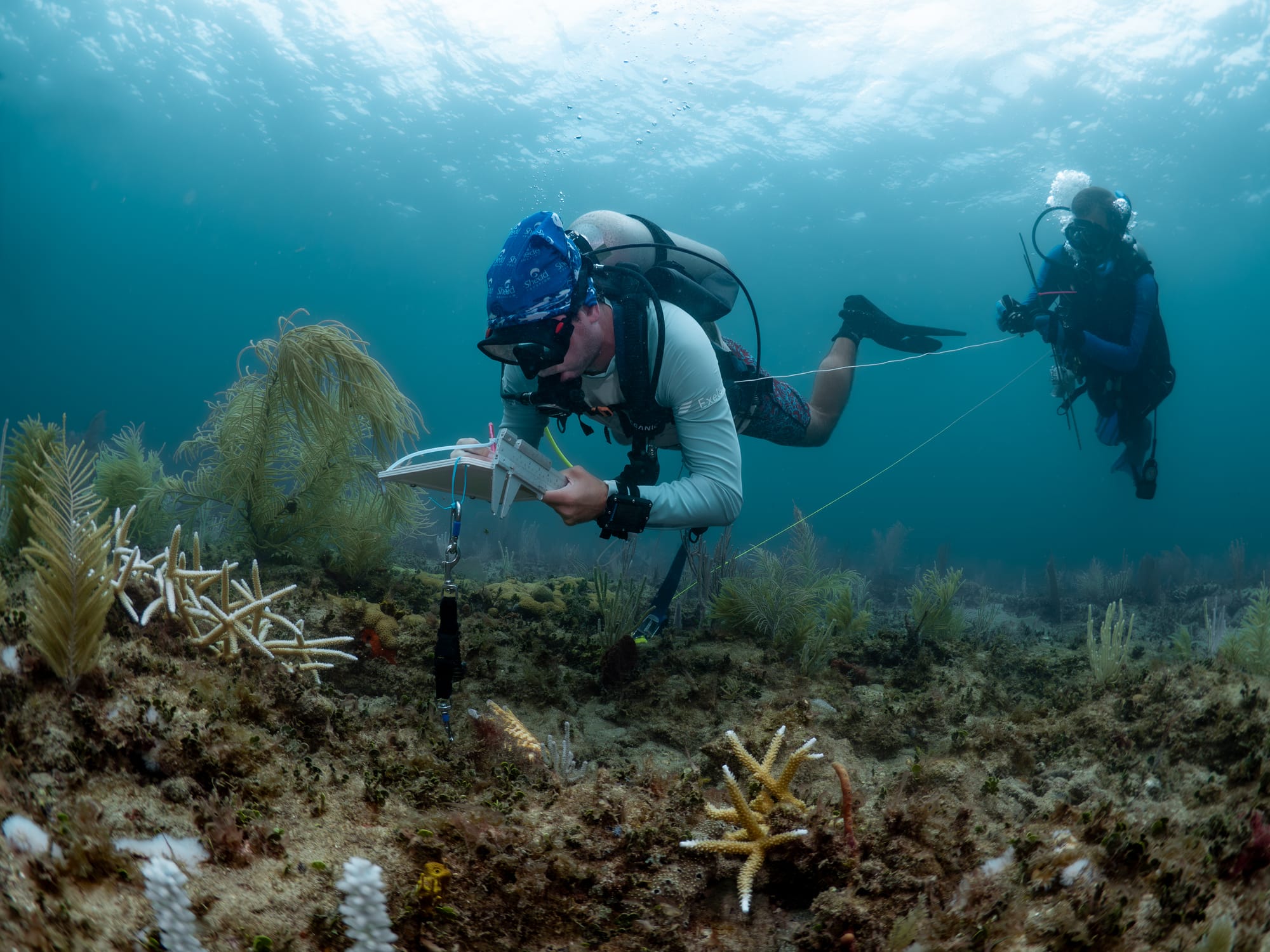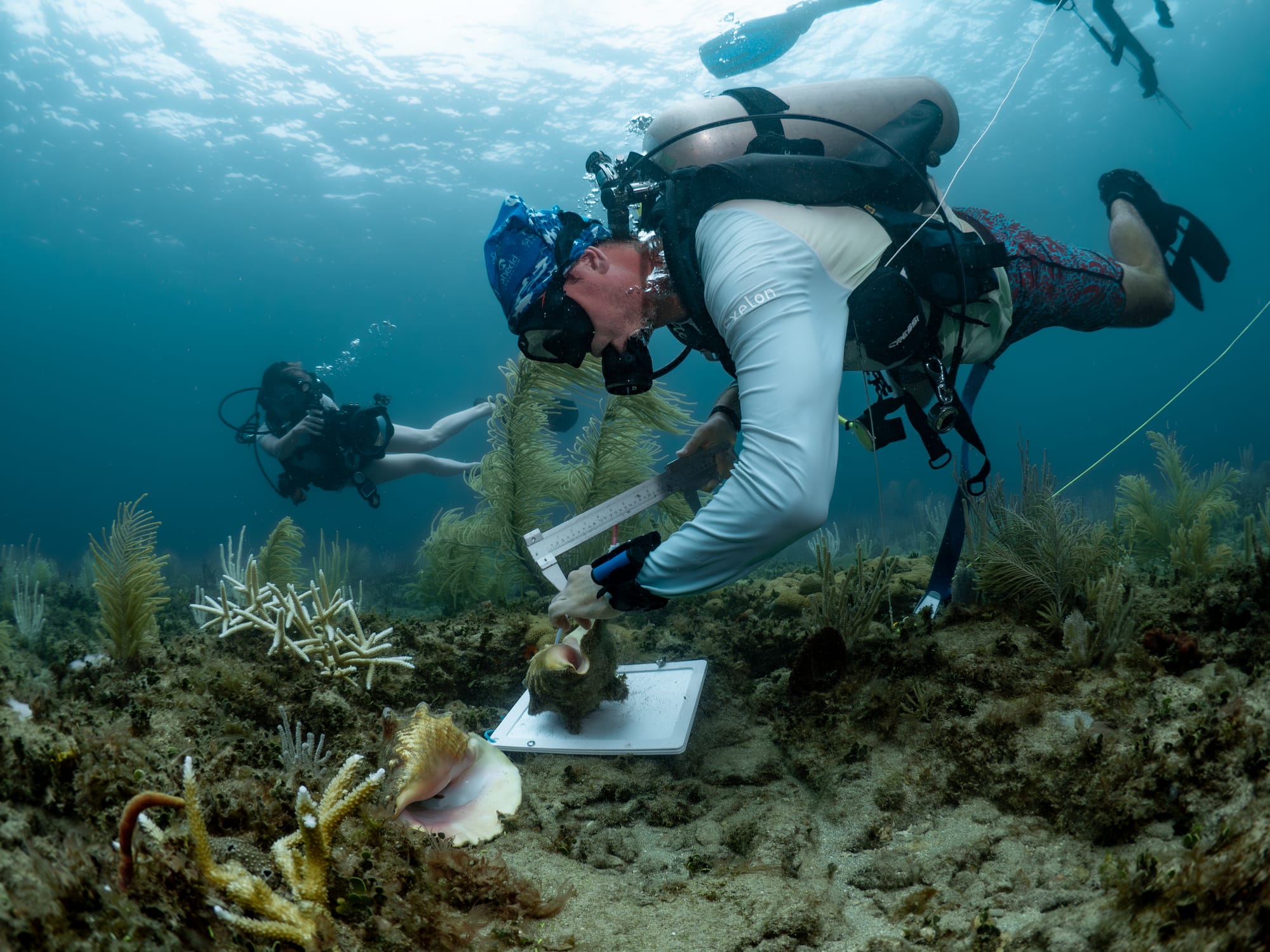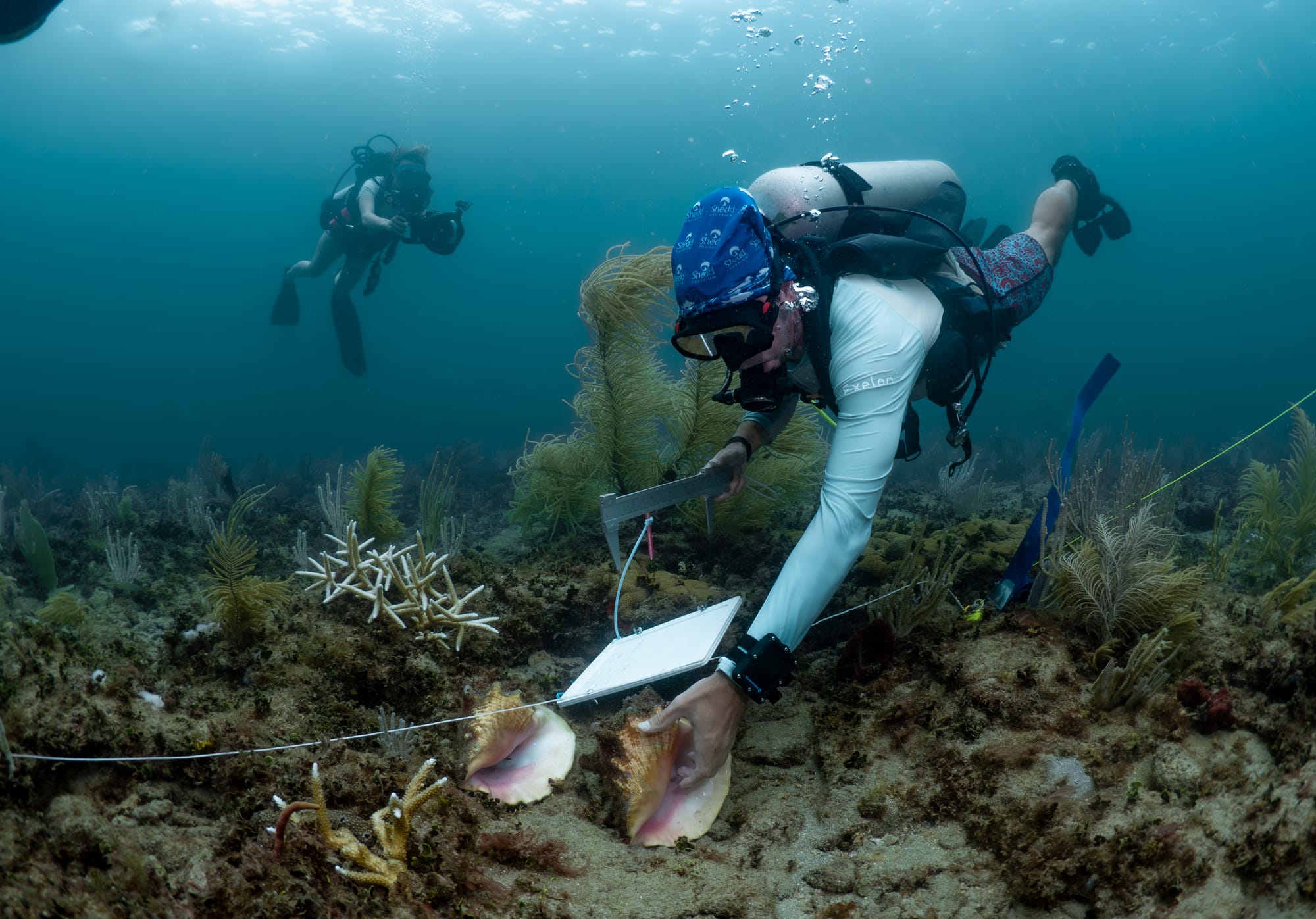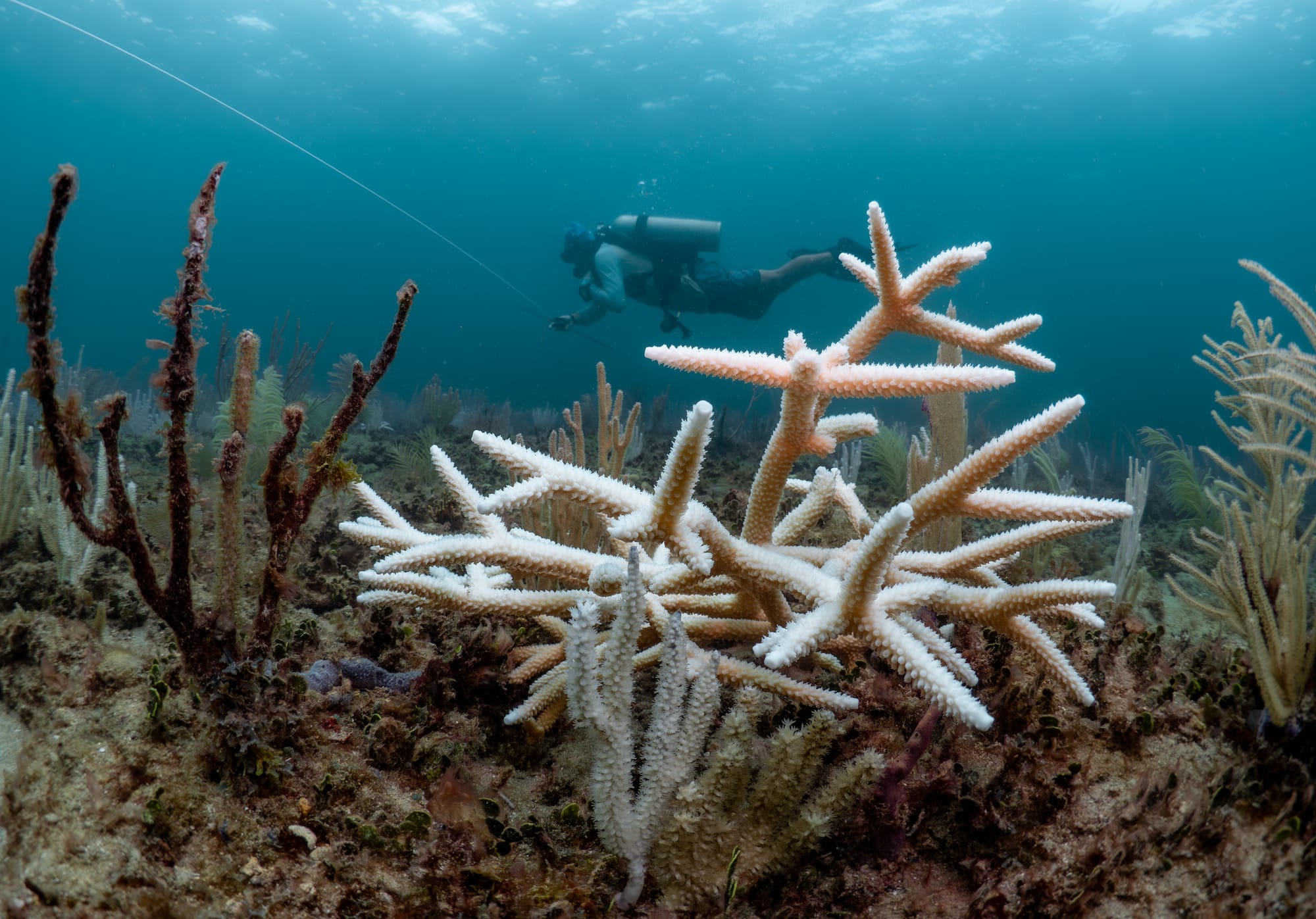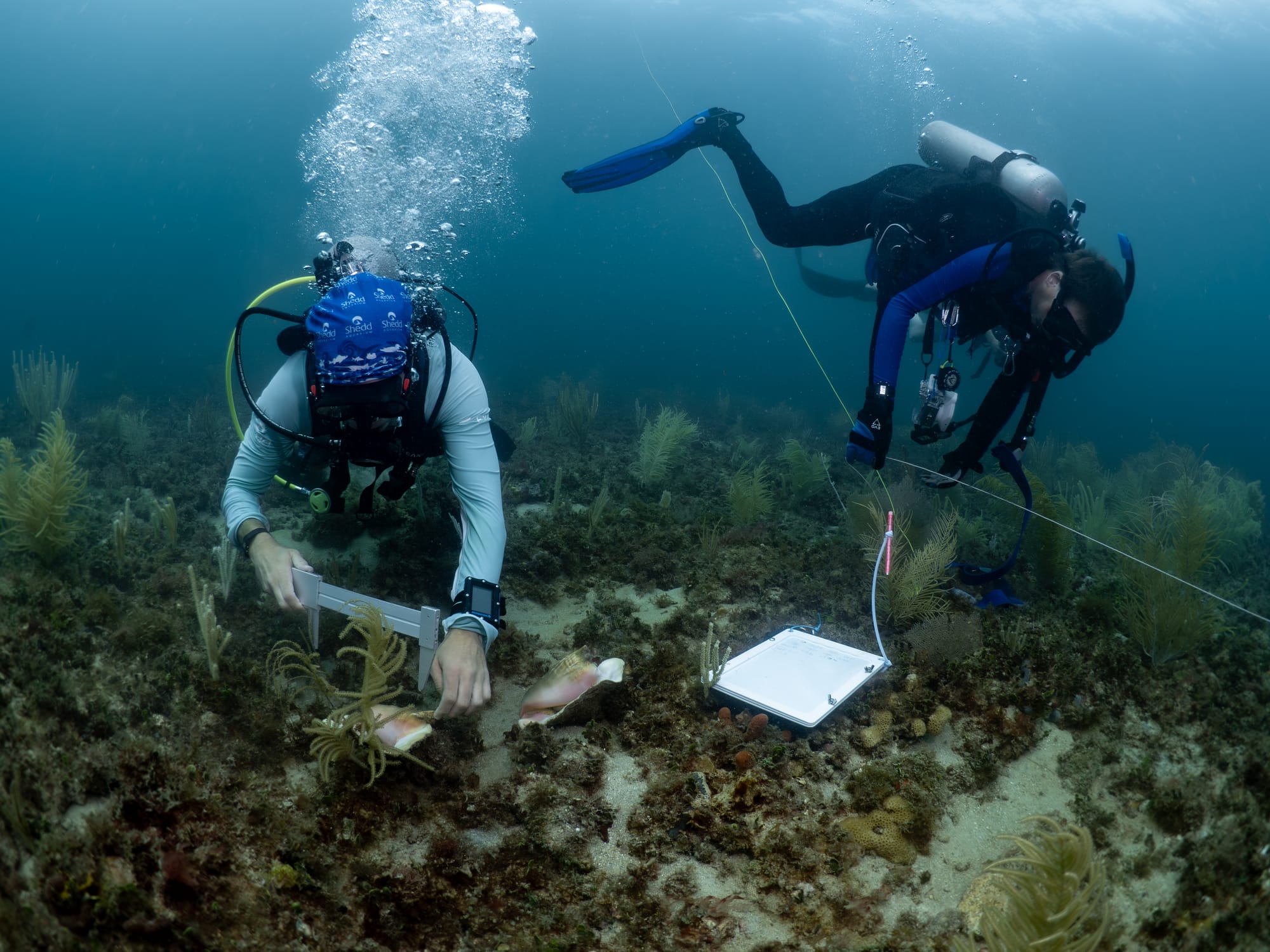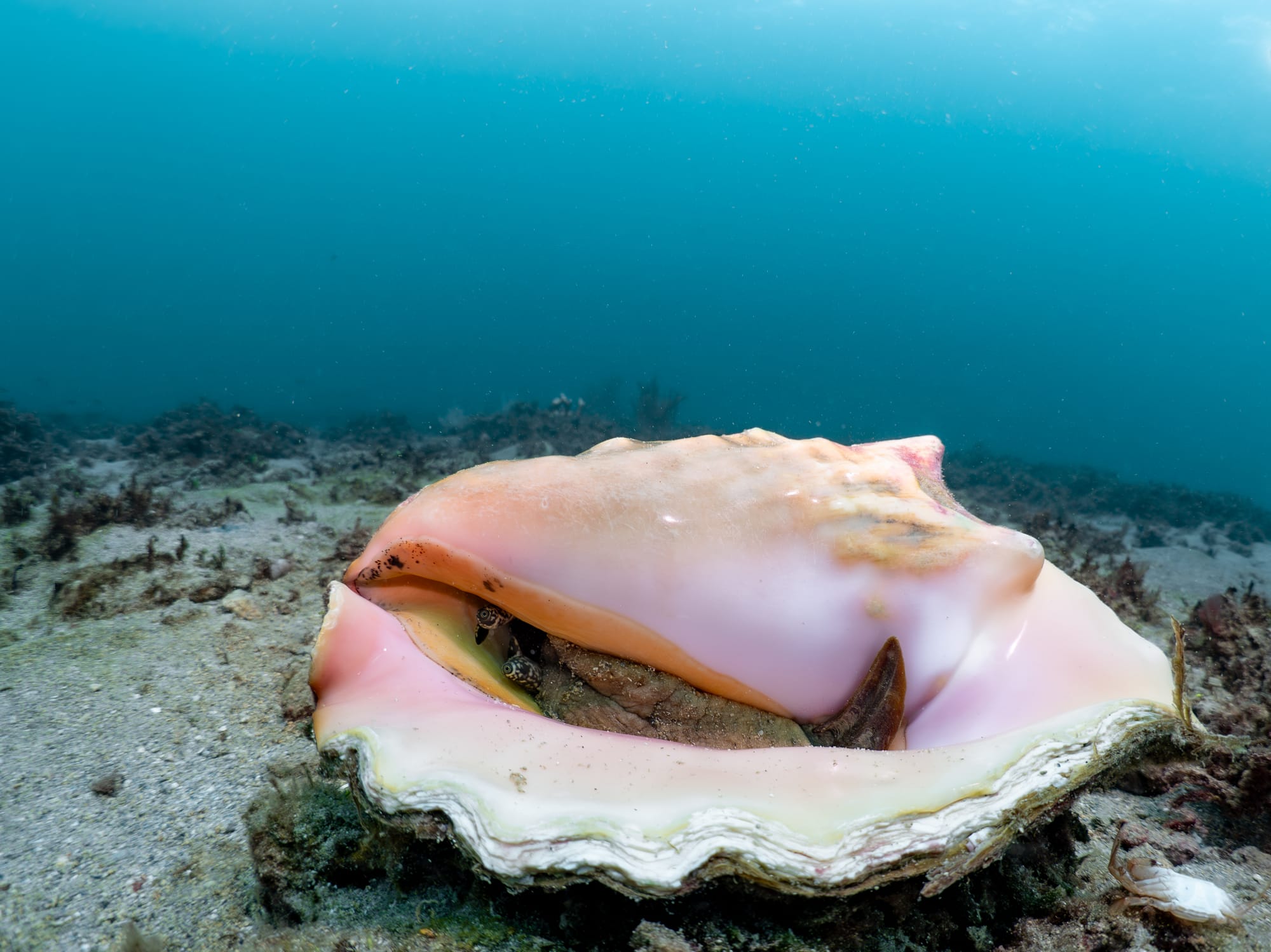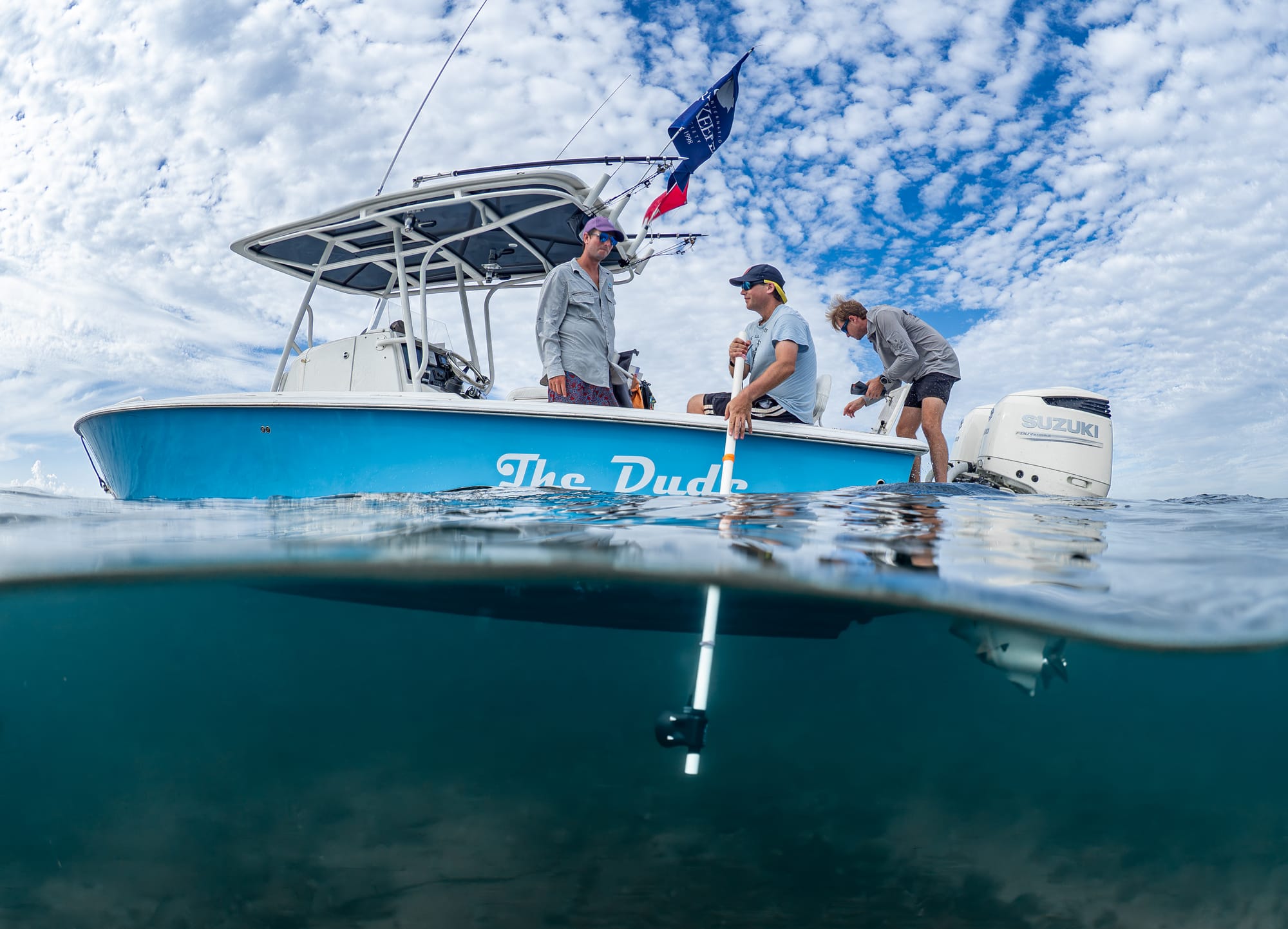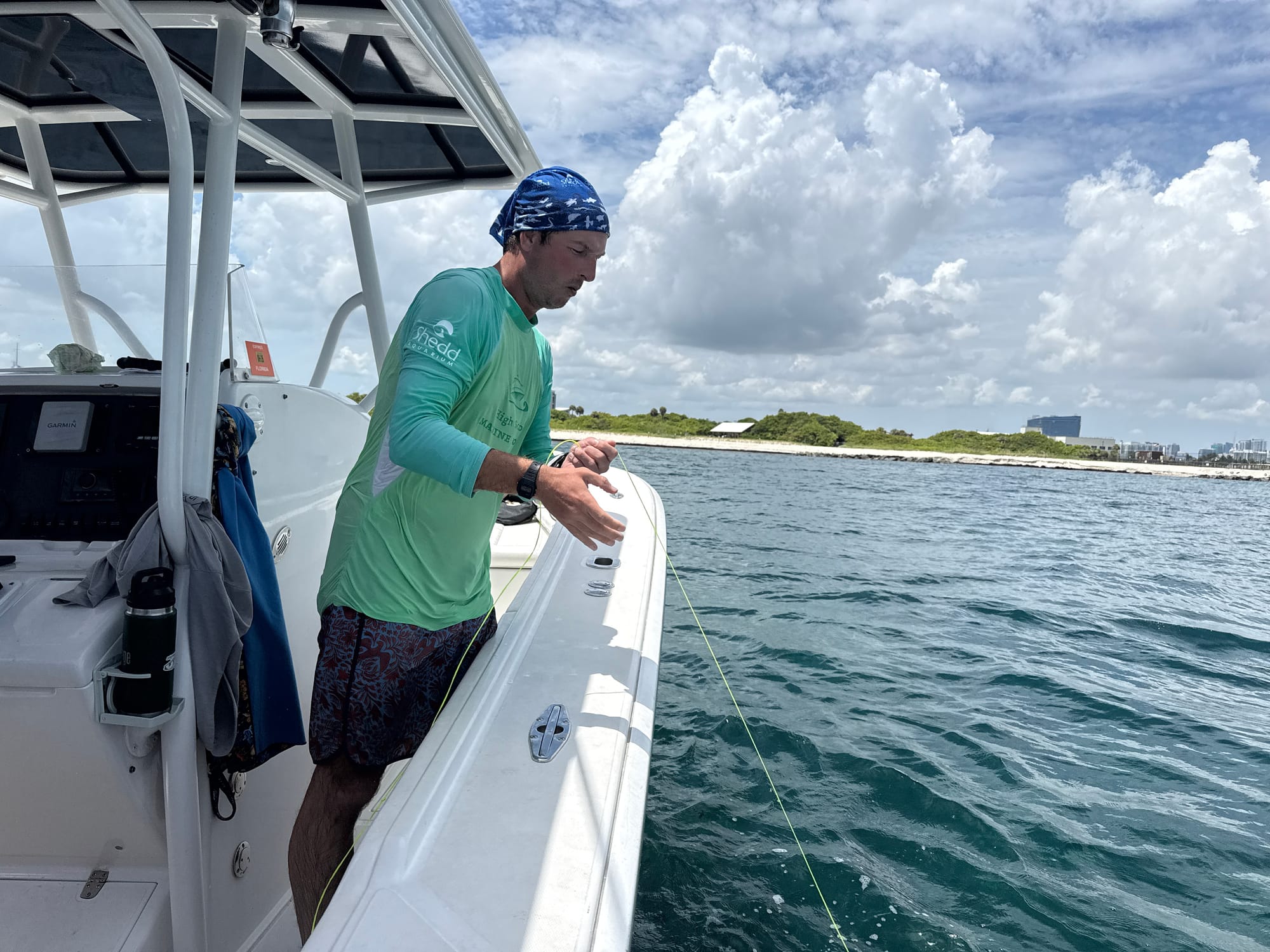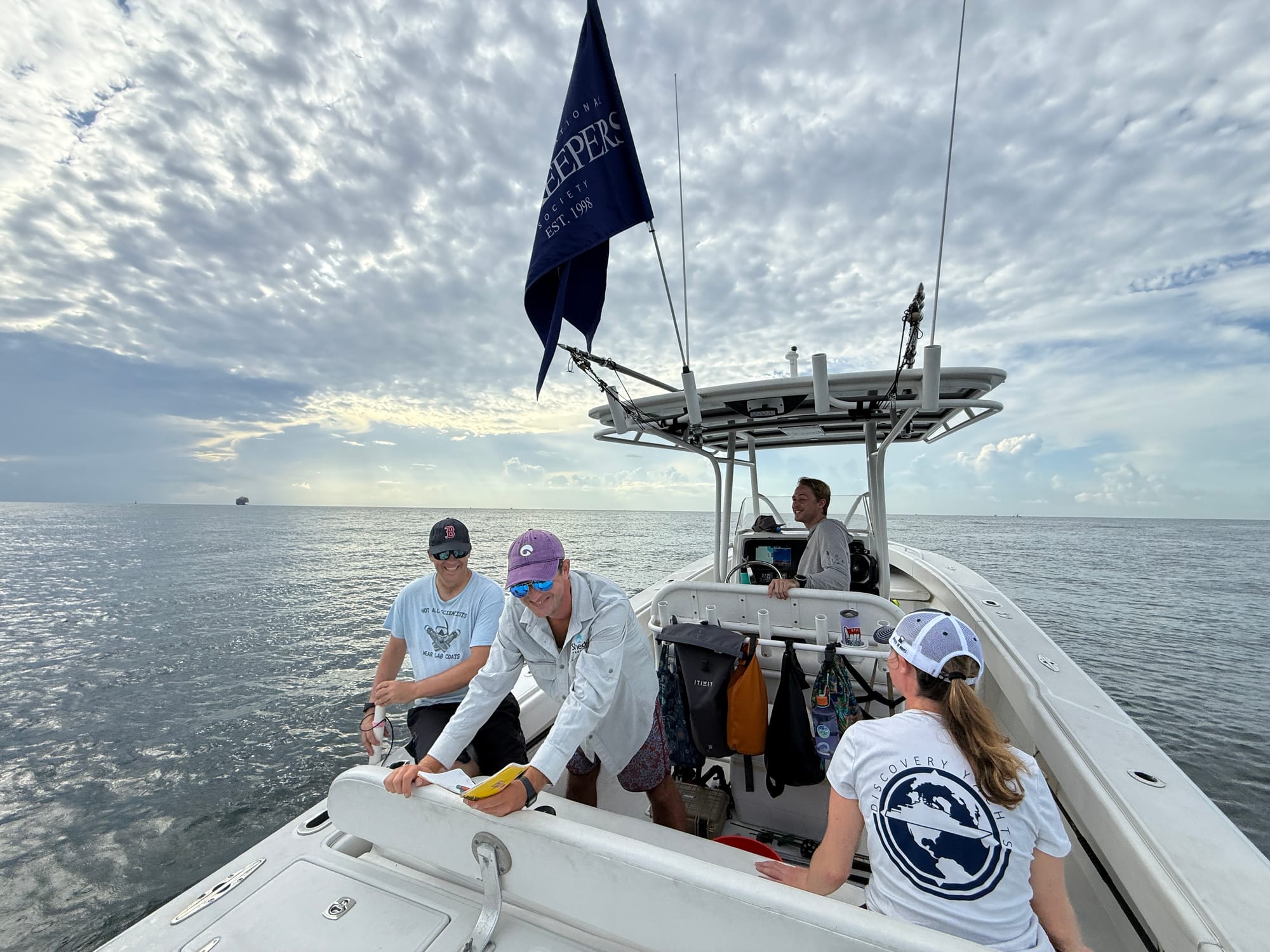- DISCOVERY Vessels The Dude and DISCOVERY III
Active Acoustic Tracking of Queen Conch
- August 26 - 27, 2025
- Ft.Lauderdale, Florida
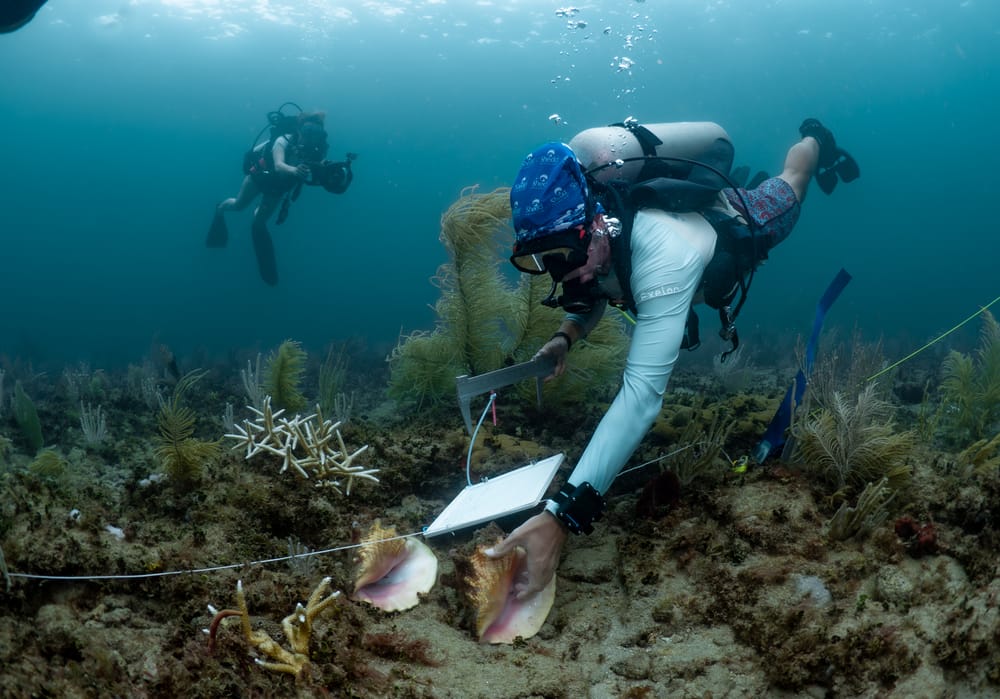
Project Overview
Queen conch are a culturally and economically important species throughout the Caribbean, yet their populations have been severely depleted due to overfishing and habitat degradation. In Florida, queen conch remain threatened, with recovery dependent on effective conservation management.
Movement patterns are critical for understanding how conch use their habitats and how marine reserves can best protect them, but these behaviors remain poorly described. This project uses novel active acoustic tracking to follow individual conch offshore of Fort Lauderdale and in the Upper Keys. By detecting and relocating tagged animals, researchers can quantify movement scales, habitat use, and site fidelity—key insights for designing protected areas and short-term measures to reduce human impacts.
Application
Findings from this research will provide critical insights into how queen conch move and use their habitats in Florida waters. By documenting movement scales, site fidelity, and responses to relocation, researchers can inform the design of marine reserves and improve short-term management strategies for this threatened species.
This expedition also supports the ongoing collaboration between Dr. Andy Kough (Shedd Aquarium) and Dr. Ben Gutzler, whose work advances the application of biologgers and acoustic tracking in marine conservation. Results from this study, including a peer-reviewed manuscript currently under revision, will contribute valuable knowledge to fisheries managers and conservation practitioners, strengthening efforts to recover queen conch populations in Florida and throughout the Caribbean.
Expedition Summary
On August 26–27, 2025, The International SeaKeepers Society supported researchers from Shedd Aquarium on an expedition offshore of Fort Lauderdale aboard DISCOVERY Vessels The Dude (August 27) and DISCOVERY III (August 26). The research team conducted final fieldwork to locate and recover acoustic tags from threatened queen conch that had been monitored for over a year.
To find the tagged conch, the team used active acoustic tracking methods. A directional hydrophone mounted on an 8 ft pole was deployed from the vessel to detect signals within ~20 meters of the snails. Once in range, researchers entered the water equipped with an underwater hydrophone and waterproof headphones, allowing them to pinpoint the cryptic animals on the seafloor while snorkeling. Each conch was marked with a GPS point to record its final location before carefully removing the acoustic tag to ensure compliance with research permits.
In addition to tag recovery, the team also conducted dive surveys throughout the area to assess conch populations and explore the distribution of breeding aggregations. These efforts provide the last data points in a year-long study aimed at quantifying conch movement patterns and habitat use. The results will help refine conservation strategies for queen conch in Florida and across the Caribbean by informing marine reserve design and short-term management actions to protect this threatened species.
Location
Ft.Lauderdale, Florida
Duration of Project
Since 2020, Andy has teamed up with Dr. Ben Gutzler to use novel biologgers and acoustic tracking to better describe how and why queen conch move, essential information for scaling reserves and for planning short term measures that could help populations in harm’s way from human impacts.
Leadership
Research Team
- Dr. Andy Kough, SHEDD Aquarium
- Dr. Ben Gutzler, Wells National Estuarine Research Reserve
- Rosie Moore, MSc, SeaKeepers – Videography
- Aubri Keith, MSc, SeaKeepers – Photography
Partner Sites
Publications
- https://www.cambridge.org/core/journals/oryx/article/queen-conch-aquaculture-remains-a-conservation-symbol-and-is-not-yet-a-fisheries-solution/BE90C7E20FC3FA7EA702D84F81CB4C8D
- https://conbio.onlinelibrary.wiley.com/doi/10.1111/csp2.17
- https://conbio.onlinelibrary.wiley.com/doi/10.1111/csp2.13162
- https://onlinelibrary.wiley.com/doi/abs/10.1002/aqc.3856
- https://www.tandfonline.com/doi/full/10.1080/23308249.2018.1480008
- https://www.tandfonline.com/doi/abs/10.1080/23308249.2023.2228905
- https://onlinelibrary.wiley.com/doi/abs/10.1002/aqc.3348
- https://www.sciencedirect.com/science/article/abs/pii/S0380133017301788
- https://www.int-res.com/articles/meps_oa/m573p177.pdf
